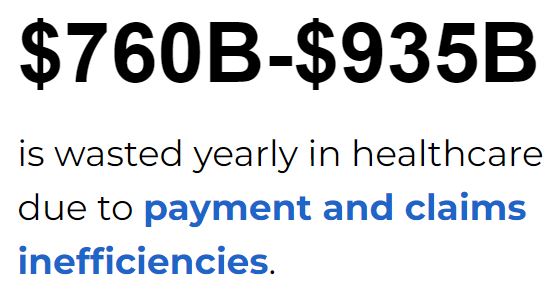The healthcare industry faces major challenges with outdated payment and billing systems that undermine financial stability and patient satisfaction. Despite the potential benefits of digital payments, legacy practices and obstacles have slowed the adoption of these innovations in the healthcare industry.
The report, “Pain and Gain: Overcoming Healthcare Payment Challenges,” produced by PYMNTS Intelligence in collaboration with American Express, highlights how the industry must address these inefficiencies and integrate digital solutions into the payment process.
Outdated payment systems cause economic damage
Inefficiencies in the healthcare payment system are a concern and place a significant burden on organizations. More than half of healthcare payment leaders believe that delays in payment and claims processing are a significant threat to the success of their operations. Despite this perception, only 53% of organizations have successfully automated their payment workflows. This discrepancy highlights a worrying reliance on outdated manual processes that continue to plague the industry.

According to the report, inefficiencies in accounts receivable (AR) processes are especially costly, with 84% of healthcare organizations reporting financial losses due to cumbersome AR procedures. These inefficiencies are exacerbated by a high reliance on paper-based communication, with approximately 70% of healthcare organizations still using paper statements for patient payments. Reliance on outdated methods not only impedes timely collections, but also leads to missed opportunities to leverage the benefits of digital payments. The result is financial losses and underscores the urgent need to modernize the healthcare payment system.
Digital innovation eases payments challenges
Despite these challenges, digital payment solutions are emerging as a ray of hope. Companies like Weave are leading the way with an innovative payment platform designed to increase patient convenience and operational efficiency. Weave’s recently introduced installment plans allow healthcare companies to easily manage recurring payments, improving cash flow management and patient satisfaction. By automating payments through stored card information, Weave’s platform reduces administrative overhead and simplifies the payment process.
Additionally, artificial intelligence (AI) is being used to address financial waste in healthcare. Waystar and Meditech’s collaboration aims to reduce the estimated $760 billion to $935 billion lost annually due to payment inefficiencies. The companies’ AI-driven solutions focus on automating workflows and improving billing accuracy, which are critical to reducing operational costs and optimizing financial performance in healthcare.
Similarly, Planet DDS is using the Cloud 9 Pay solution to demonstrate how specialized medical settings can benefit from digital payments. The platform facilitates tap-to-pay contactless transactions while ensuring compliance with payment card industry standards. Integrating such a solution allows specialized clinics to streamline operations and improve patient experience, demonstrating the potential for digital payments to transform even niche areas of healthcare.
Challenges to the widespread adoption of digital payments
Despite promising progress, the road to widespread digital payments in healthcare is fraught with challenges. Cybersecurity remains a major concern, with 78% of healthcare professionals reporting experiencing at least one cybersecurity incident in the past year. The impact of these incidents on healthcare delivery is significant, highlighting the need for strong security measures to protect both patient data and payment systems.
Patient resistance is a major obstacle to the adoption of digital payments in healthcare, with 26% of professionals identifying it as a major barrier. To ensure a smooth transition, it is essential that digital payment solutions meet patient expectations and build trust. As the industry struggles with outdated payment systems, the shift to digital presents an opportunity to address inefficiencies and improve both financial and operational outcomes.


